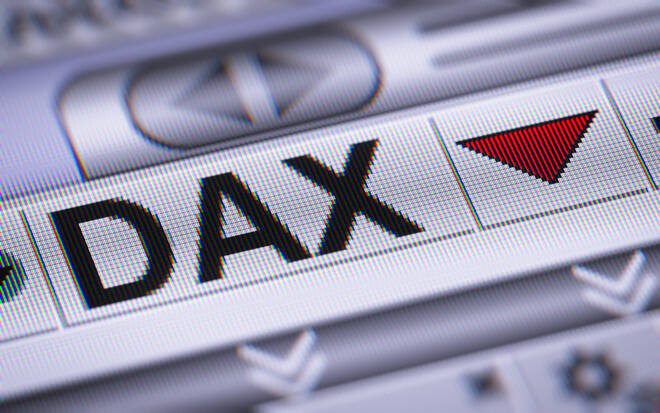Advertisement
Advertisement
European Equities: A Week in Review – 18/09/20
By:
The European majors gave up gains from early in the week, with central banks and COVID-19 doing the damage.
The Majors
It was a mixed week for the European majors in the week ending 18th September. The CAC30 fell by 1.11% to lead the way down, with the DAX40 ending the week down by 0.66%. Bucking the trend for the week was the EuroStoxx600, which rose by 0.22%.
At the start of the week, the markets jumped into action in response to COVID-19 news from the previous weekend. Reports of Oxford University’s resuming trials of its COVID-19 vaccine supported riskier assets early on.
In the week prior, trials had been suspended due to a patient becoming ill.
On the geopolitical front, criticism over Boris Johnson’s Internal Market Bill failed to rile the markets. Hopes are that the House of Lords would reject the bill in its current form. Such an outcome could test support for Johnson and the Brexit hardliners.
A passing of the bill, however, would likely materially increase the chances of a no-deal Brexit, which would be viewed as a market negative.
In the 2nd half of the week, however, the FED and the BoE weighed on riskier assets. For the CAC40 and DAX30, it was a bearish end to the week that reversed gains from earlier in the week.
A spike in new COVID-19 cases also weighed on the European majors on Friday. On Thursday, the WHO had reportedly raised concerns over the jump in new COVID-19 cases in Europe.
A reintroduction of lockdown measures would materially impact the Eurozone’s economic recovery that has shown signs of waning.
The Stats
It was a relatively busy week on the Eurozone economic calendar.
In the 1st half of the week, industrial production and trade figures from the Eurozone delivered positive results.
Economic Sentiment figures for September also improved, delivering the majors with support in the 1st half of the week.
Later in the week, however, the focus shifted to monetary policy, which left the majors on the back foot.
Both the BoE and the FED delivered particularly dovish views on the economic outlook and monetary policy.
While lower for longer tends to be positive for riskier assets, FED talk of near to zero rates until 2023 was unexpected.
With the FED delivering warning signals, the BoE didn’t hold back on Thursday, with the talk of negative rates doing the rounds.
From the U.S
Key stats included the weekly jobless claims, industrial production, and retail sales figures for August and September manufacturing data.
The stats were skewed to the negative, adding downward pressure on the majors later in the week.
While manufacturing sector activity picked up in NY State, sector growth slowed in Philly.
Retail sales figures came up short of expectations questioning the market’s optimistic outlook on the economy.
With jobless claims figures also disappointing, there were few reasons for the markets to shake off the central bank doom and gloom.
Wrapping things up from the U.S were prelim consumer sentiment figures on Friday, which were positive but not enough to shift the mood.
From elsewhere, industrial production and retail sales figures out of China had provided the European majors with support early in the week.
The Market Movers
From the DAX, it was a bearish week for the auto sector. Continental and Volkswagen slid by 3.12% and by 4.91% to lead the way down. BMW and Daimler saw more modest losses of 0.87% and 1.825 respectively.
It was also a bearish week for the banking sector. Commerzbank slid by 7.36% following last week’s 6.06% tumble, with Deutsche Bank falling by 2.04%.
From the CAC, things were not much better for the banks. BNP Paribas and Credit Agricole slid by 5.36% and by 5.70% respectively, while Soc Gen saw a more modest 1.64% loss.
The French auto sector also struggled in the week. Peugeot and Renault slid by 3.61% and by 7.44% respectively.
Air France-KLM and Airbus saw relatively modest losses of 0.46% and 0.32% respectively, however.
On the VIX Index
It was a 2nd consecutive week in the red for the VIX. In the week ending 18th September, the VIX fell by 3.87%. Following on from a 12.62% slide from the previous week, the VIX ended the week at 25.83.
The weekly slide came in spite of the U.S equity markets ending the week in the red after a bearish end to the week.
For the week ending 18th September, the S&P500 and the NASDAQ ended the week down by 0.64% and by 0.56% respectively. The Dow saw a more modest 0.03% loss.
The Week Ahead
It’s a busy week ahead on the Eurozone economic calendar.
At the start of the week, key stats include Eurozone and German consumer confidence figures. With consumer consumption a must to support any economic recovery, sentiment will need to continue to improve.
Of greater significance, however, will be September’s prelim private sector PMIs for France, Germany, and the Eurozone.
Following disappointing numbers for August, another tick lower would be negative for the majors.
Wrapping things up will be Germany’s Ifo Business climate index numbers for September on Thursday.
The degree of influence, however, will depend on Wednesday’s PMIs.
From elsewhere, expect U.S private sector PMIs, weekly jobless claims, and core durable goods orders to also influence.
Away from the economic calendar, COVID-19 and geopolitics will also need monitoring.
About the Author
Bob Masonauthor
With over 28 years of experience in the financial industry, Bob has worked with various global rating agencies and multinational banks. Currently he is covering currencies, commodities, alternative asset classes and global equities, focusing mostly on European and Asian markets.
Advertisement
